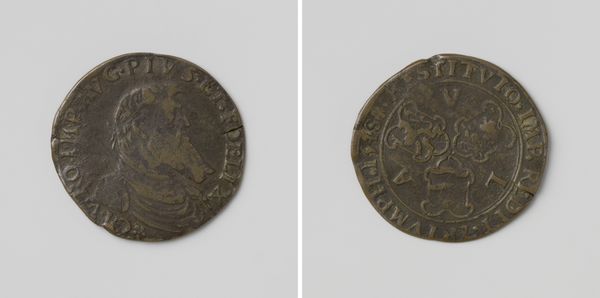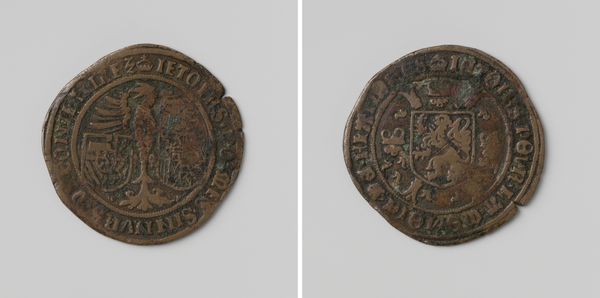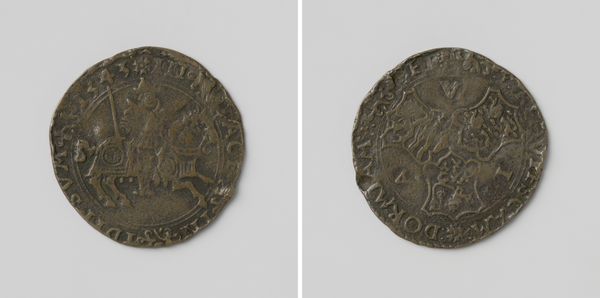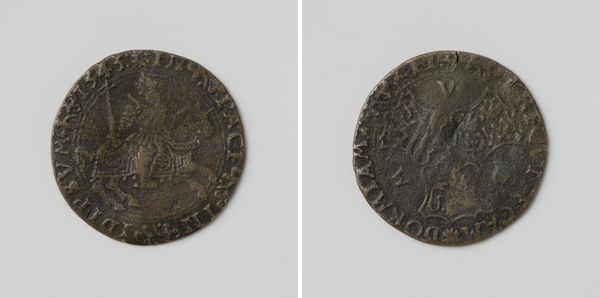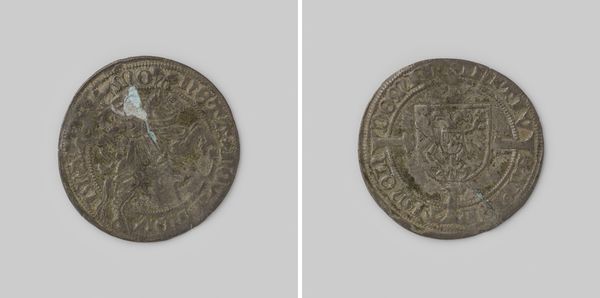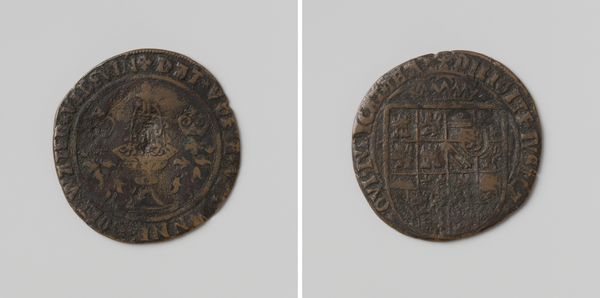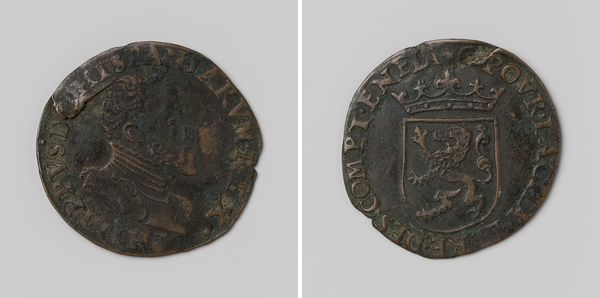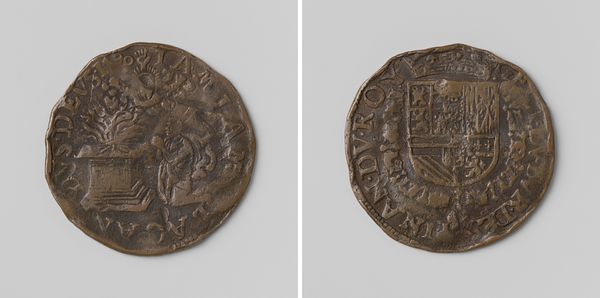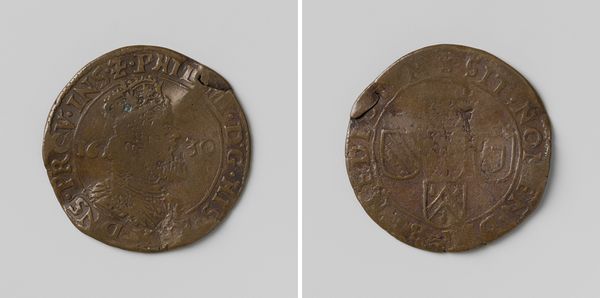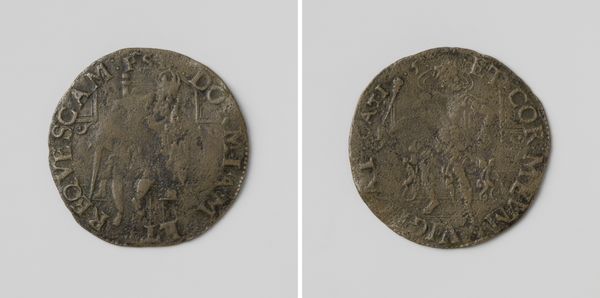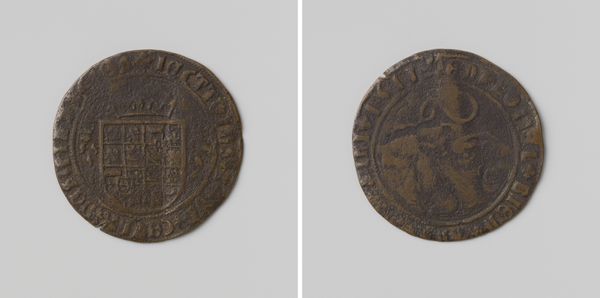
Karel V, Duits keizer, rekenpenning van de raad van Financiën van de keizer 1516 - 1540
0:00
0:00
anonymous
Rijksmuseum
print, metal, relief, bronze, sculpture
#
portrait
#
medieval
# print
#
metal
#
sculpture
#
relief
#
bronze
#
sculpture
Dimensions: diameter 2.9 cm, weight 3.49 gr
Copyright: Rijks Museum: Open Domain
This is a copper accounting token depicting Charles V, likely made somewhere in the Holy Roman Empire. These tokens were produced for the emperor’s finance council. The image creates meaning through visual codes. On one side is a double-headed eagle, a symbol associated with the Holy Roman Empire, surmounted by a crown. The other side depicts a Burgundian cross, an emblem of the Habsburg dynasty. This cross refers to the historical region of Burgundy, part of Charles V’s inheritance and a key territory in his vast European holdings. The token speaks to the fiscal administration required to manage such a large, diverse, and geographically dispersed empire during the 16th century. To better understand this object, historians might consult archival records from the Habsburg administration or study numismatic collections to see how currency and accounting practices evolved during this period. In the end, art always reflects the context of its creation.
Comments
No comments
Be the first to comment and join the conversation on the ultimate creative platform.
